|
|
Jenö Takács (Composer) |
|
Born: September 25, 1902 - Cinfalva (Siegendorf), Hungary
Died: November 14, 2005 - Eisenstadt, Austria |
|
Life |
|
The composer, pianist, teacher and ethnomusicologist Jenö Takács was both Hungarian and Austrian, the duality of his place of birth later reflected in the political vicissitudes which affected his life. He was born in the little village of Siegendorf, south of Vienna, in the rolling wine country of Burgenland (near Haydn's erstwhile stomping ground of Eisenstadt), which was Hungarian until 1921. From 1921 to 1926, he studied at the Academy of Music and the Dramatic Arts in Vienna - composition with Joseph Marx and piano with Paul Weingarten - and at the University of Vienna - counterpoint with Hans Gál (later, as a refugee from Nazism, to be a stalwart of music in Edinburgh) and musicology with the revered Guido Adler, founder of the discipline.
Jenö Takács’ first concert tours - in his late teens and early twenties - took him around Germany, Hungary and Yugoslavia. And he was already composing, initially in a style which blended his Hungarian roots with the colours of French impressionism; his Viennese teachers added a respect for contrapuntal and thematic clarity.
But it was his first meeting with Béla Bartók in 1926 (they were to stay friends until 1940, when B. Bartók fled to the USA) that was decisive, reinforcing Takács' awareness of the Hungarian folk idiom, expanding his use of tonality and the resourcefulness of his rhythms and his phrase-construction. In 1982 he published a book of his memories of B. Bartók, Erinnerungen an Bela Bartók. Alban Berg and Paul Hindemith were other early friends.
In 1927, Jenö Takács s took up a professorship of piano at the Conservatory in Cairo, using his five years there to investigate Arabic music. His next appointment took him even further afield, to a professorship in piano and composition at the University of the Philippines in Manila. Here, too, he collected folk music, some of it from tribes that had been head-hunters not long before; and he concertised, playing in China, Japan and Hong Kong. In 1934-37 he returned to the Cairo Conservatory, and in 1938, based back in Austria, he undertook his first tour of the US, playing the solo part in his own Tarantella for piano and orchestra.
That was the year of the Anschluss and so, in 1939, to avoid becoming a pawn of Nazi cultural politics, Jenö Takács moved to Hungary, to Sopron, where his parents had taken up residence; he renounced what had been Austrian citizenship (it now made him officially a German) and became Hungarian again. In 1942 he was nominated director of the Music School in Pécs in southern Hungary (earning it elevation into a conservatory during his tenure), and in this phase of relative professional stability - although in a world turned upside down - he composed his most ambitious work, the cantata The Song of Creation (1946). But here, too, politics was to rear its warty snout, and in 1948 Takács left to avoid the Communist dictatorship, spending some months travelling through Austria, Switzerland and Italy before settling - with Eva, his second wife - in Grundlsee in the Austrian province of Styria.
For the three years from 1949 Jenö Takács toured Europe and the USA as a pianist; he also held guest professorships at the conservatories of Geneva and Lausanne. His longest-held appointment came in 1952, when he took up a professorship in piano and composition at the College-Conservatory at the University of Cincinnati in Ohio, where he won the loyalty of his students for his matter-of-fact directness.
On retirement in 1970, Jenö Takács moved back to Siegendorf, where he stayed for the rest of his life, composing assiduously and harvesting a sheaf of prizes and honours. He published his memoirs in 1990, Erinnerungen, Erlebnisse, Begegnungen ("Memories, Experiences, Encounters").
As Jenö Takács grew ever older, he added a certain veneration to the affection in which he was universally held. When he reached 100, some 300 concerts featured his music in tribute to his birthday; a Festschrift was published and an exhibition mounted in Eisenstadt; CD’s and new editions of his music appeared - cheering up the composer who in his mid-nineties had begun to worry that, like so many others, he might see his music disappear down the plughole of history. And he retained his sharpness to the end. Planning a trip to go and see him in 2004, I was warned that his increasing deafness might make the interview difficult - "Aber reden kann er noch": he can still talk!
Jenö Takács received many awards during his long life, including the Great Cross of Burgenland (1962), the Austrian State Prize (1963), the Prize of the Bartók-Pászthory-Foundation (1990) and the Gold Medal of Honour of the City of Vienna (1993).
Jenö Takács was twice: in 1927 he married Gertrude Christy in (marriage dissolved 1937), and in 1943 Eva Pasteiner. He died in Eisenstadt in 2005 at the age of 103. |
|
Music |
|
"Certainly composers who keep the same style through their whole lives have an easier standing. But is it the right way? We all develop. I never resolved "how" to compose, only "what"! - It was the nature of the ideas that led to the "how". A man like me, who spent nearly his whole life travelling, quite naturally assimilated the impressions from all the places, where he lived. Egypt, the Philippines, Japan, China: These countries communicated ideas reflected in my work. Anyway, I never would immolate a good idea - be it old-fashioned or avant-garde-like - to a certain style. I consider the basic message most important. And each thought, each single work asks for its specific technique and its own stylistic means to be realized."
These notes by Jenö Takács from 1976 (quoted after Wolfgang Suppan: Jenö Takács. Dokumente, Analysen, Kommentare. Burgenländisches Landesarchiv, Eisenstadt 1977) describe the most eye-catching attribute in his oeuvre - stylistic plurality - as well as other most important aspects.
Takács' sizeable output has had mixed success in finding a wider audience, although his teaching pieces - often bearing come-hitherish titles such as For Me, When the Frog Wandering Goes, Very Easy (and Not So Easy) Pieces, Something New For You and Postcard Greetings - are used across the globe to introduce young people to music. His "adult" music evolved through a variety of styles.
There are clearly separate periods in which we can find strikingly different characteristics: His earliest works are full of impressionistic colours and the influences of Hungarian folkmusic, e.g. Sonatina for piano, Op. 2 (1920/1923). In the composition class of Joseph Marx Takács was taught strict contrapuntal and thematical work. His acquaintance with B. Bartók intensified the Hungarian influences (theme construction, rhythm, bitonality).
Research in Egyptian-Arab and later in Philippine folk music also left its mark on Takács's compositions, e.g. in Suite Arabe for two pianos, Op. 15 (1929), or in Goumbri, an Oriental rhapsody for violin and piano, Op. 20 (1931). His research in international folk music also resulted in his popular piano cycle for children Von fremden Ländern und Menschen [From Far Away Places], Op. 37 (1936). The main work of this compositional period is the virtuoso Tarantella for piano and orchestra, Op. 39 (1937). Other imprtant works from this period are the Suite Philippine for orchestra (1935) and the ballet Nile Legend (1935-1937).
During his Hungarian years in the 1940’s we can find e. g. Suite altungarischer Tänze [Suite of Old Hungarian Dances] for orchestra, Op. 42 (1946), and Antiqua Hungarica for orchestra, Op. 47 (1941). In those works, he went back to old traditional Hungarian songs and dances which he skilfully arranged for modern instruments without any drastic alterations in the melodic, rhythmic or harmonic substance.
Around 1949 Takács turned to classical forms, composing numepartitas and toccatas. Teaching in the USA also aroused a special interest in the technique of Arnold Schoenberg's Second Viennese School: although there's only one strictly 12-tone piece, for piano solo, Op. 58 (1954), composed for Paul Badura-Skoda. In the Passacaglia for string orchestra, Op. 73 (1960), the composer experimented with serial techniques. Takács also examined indeterminacy and other more radical methods.
In the mid-1960s Takács turned further away from traditional tonality and displayed a more pronounced interest in methods of the then avant-garde: Dialogues for violin and guitar, Op. 77 (1963), include sound effects and non-musical expression marks; Essays in Sound for clarinet and piano, Op. 84 (1967), contains clusters and indeterminate elements. But he never lost sight of the fact that music must engage its audience and, even during his most adventurous periods, he was writing music with a very direct appeal, and again composed arrangements of folk and old popular music, e. g. Serenade on Old Graz Contredanses for orchestra, Op. 83 (1966), scored for a variety of forces to assure a maximum of performances. Durinf this periuod he also composed pedagogical works.
The music of the 1980’s and 1990’s brings a synthesis of elements from earlier periods. In these years Takács also shows his affinity for lively stylizations in the spirit of composers from the Baroque or Classic, e.g. Joseph Haydn in the Sinfonia breve for orchestra, Op. 108 (1981), , rather as Prokofiev had in his Classical Symphony. Purcell, too, was acknowledged in the suite for strings Purcelliana (1993-94) and the Hommage à Henry Purcell for brass quintet (1994).
Jenö Takács was one of those composers who produce music the way trees produce apples, as a natural process - although the fluency of his completed works disguised the perfectionism that went into creating them. For Herbert Vogg, former director of Doblinger, his Viennese publisher, “Takács is in his music what he is also as a human being: noble, sensitive, sure, not always accommodating, but also never hurtful. [He] is free of the ambition and vanity of many of his colleagues.” In a visit to Vogg's office in 1959, Takács showed both sides of his character, walking up and down as he volubly insisted the cash-strapped Doblinger take on his Concerto for Piano, Strings and Percussion. Eventually, Vogg gave way before the onslaught and agreed. Takács stopped his peripateia, leant over Vogg's desk and said, slowly, with an ironic twinkle, "You know, the first movement - is not good." |
|
Works |
|
See: Jenő Takács (Wikipedia) [German] |
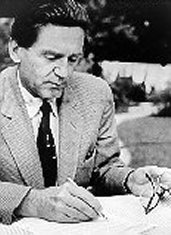
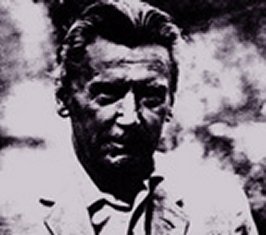
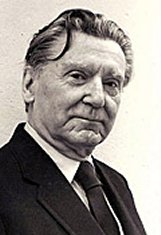
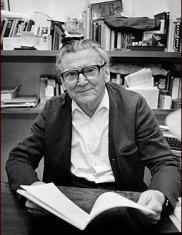
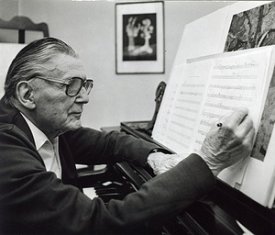
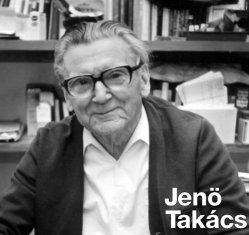
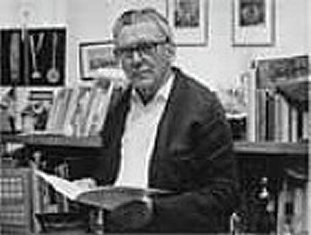
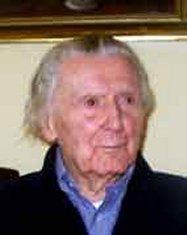 |
|
Source: Obituariy in The Independent (January 19, 2006; Author: Martin Anderson); Jenö Takács Website (Author: Christian Heindl, translated by Eugene Hartzell/Christian Heindl)); Wikipedia Website (February 2011)
Contributed by Aryeh Oron (April 2011) |
|
Jenö Takács : Short Biography | Piano Transcriptions & Bach-inspired Piano Works: Works | Recordings |
|
Links to other Sites |
|
Jenö Takács (Official Website)
Jeno Takacs Obituary (The Independent) |
Jenő Takács (Wikipedia) [English]
Jenő Takács (Wikipedia) [German] |
|
Bibliography |
| |
|
|